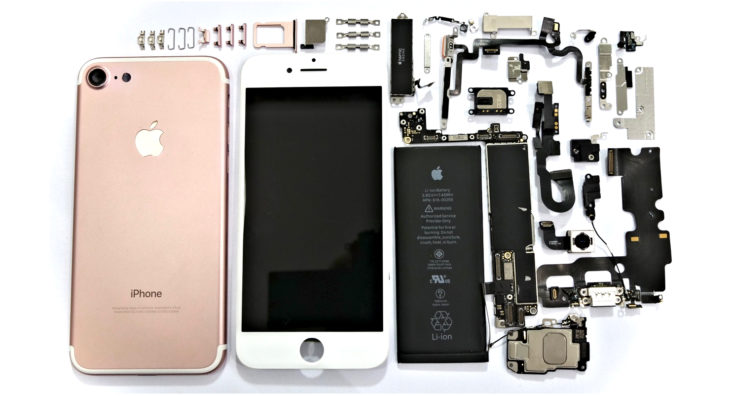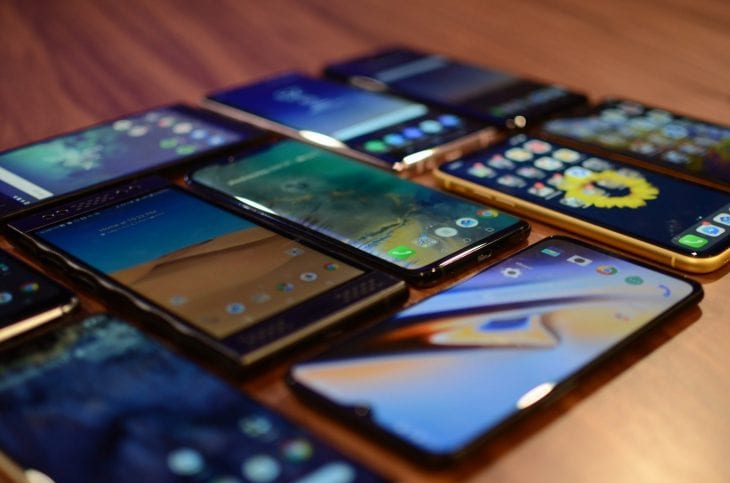Cell phones have become an essential part of daily life in the Western hemisphere. Friends organize their plans and schedules using cooperative calendars and ever more advanced group chats. Work is communicated between texts and emails, quick calls that fly a mile a minute. Long meetings between boss and employee can now be reduced to a five-minute text conversation without either party needing to get up from their desks. Even romance in our lives is being communicated in shorthand, with third-party emojis and gifs taking the place of hand-written love notes. Communication is now easier and more concise than it’s ever been. So now, when your phone starts ringing, it’s an oddity.

Apple iPhone and all of its parts
The traditional landline telephone enjoyed its reign as the go-to form of teen technology, from the 1940s to the late 90s A staple of households, they enabled millions of people to enjoy the freedom of conversation they’d never known before. A defining symbol of pop culture, they were featured and even intrinsic to many films and television. George Constanza tells Jerry he is a master of the phone call. The opening scene of the groundbreaking horror film Scream has almost all of its suspense built up over a phone call. Shows like Freaks & Geeks exemplified the effortless charm that phone calls gave to their characters.
This portrayal of phone calls was not unique to fiction. Teens gabbed constantly, and adults did too. It was considered rude to not answer the phone. The etiquette of culture was rapidly changing, as people now had a device to access you in your own home.
With smartphones, the phenomenon extends outside the home, straight into your pocket. People can now reach you anywhere, at virtually anytime. You might be in the movies, in a classroom, in a doctor’s appointment. And the etiquette has evolved to match these circumstances. When people used to call you on a landline telephone, they knew you were home if you answered it. If no one answered, no one was home. However, now someone could not be answering because they’re anywhere. Among millennials and newer generations, this unknowingness can cause people to not call you at all.
A text message is a virtual letter that enables you to reach a person with ease without having to worry about disturbing them. If it’s about the mundane or vaguely humorous, then all the more reason to not call someone. A phone call carries with it the feeling of the urgent, the important, the necessarily-known right now. A text message in its informality can sometimes feel more personal than a phone call, as there is no vulnerability involved. One can sit and formulate and stew over their thoughts for hours over a text, and engage in multiple conversations at once. A phone call demands presence. As a result, the phone call is diminishing in both its use and reputation.

Source: digitaltrends.com
As smartphones rise in usage, landlines have decreased significantly. Since 2004, landline ownership has decreased by more than half, while smartphones have obviously filled that void. And with their prominence comes a new age of communication – and consumers.
Where landline technology basically remained the same for one hundred years, smartphone technology seems to advance on a daily basis. Every year, new communication technologies are being introduced, modified, and scrapped. Texting, group chat, video conferencing, gifs, etc. As these new technologies are introduced, the devices that enable them are constantly being streamlined as well. Since the first iPhone was manufactured and released in 2007, there have been over twelve models released. That’s one per year on average. The company has been accused of planning the obsolescence of their devices and was recently involved in a class-action lawsuit regarding the matter. But even companies that haven’t been accused of intentionally making their products obsolete still engage in this practice to some degree. No matter the cell-phone manufacturer, all release new cell phone brands regularly, while changes seem to remain relatively minimal. A better camera, more storage capacity, and lighter phones are doing little to change the basic product itself.
However, these new lines and different models are definitely changing the face of Earth itself. The average smartphone uses roughly 0.035 lbs of copper in its production process. Multiply this by a million, and the usage of materials is staggering. Considering smartphones also require the use of water, nickel, zinc, gold, silver, and many other finite resources, it is mind-boggling the number of devices being burnt through. The United States throws away millions of cell phones a year. As these devices are being purchased for people of younger and younger ages, the number in circulation will likely only increase.

Source: Elite Daily
People seem relatively indifferent to the impact of their phones. This is understandable, as most smartphone owners live thousands of miles away from where their phones are produced. These producing nations, such as Bangladesh, are often inhabited by individuals who don’t make anywhere enough to purchase on of the devices. As a result, the positive and negative impacts of these products are also separated by thousands of miles.
However, one’s impact on the environment can be minimized by making more of an effort to both be aware of where your phone goes, and how long you can make your phone last. Instead of simply tossing your device, one can take part in a cell phone recycling program. Sometimes you can even be paid by mailing your device into recycling facilities. If you’re lucky enough, there may even be a facility that accepts your cell phone that is within driving distance. Recycling facilities can extract the precious minerals used to make your device, and repurpose them for other uses. This eliminates your contribution to larger and larger landfills and also can earn you a quick buck.
Conversely, you can extend the life of their cell phone by replacing the parts yourself. In addition to a slew of websites offering parts for your device, like iParts4U UK, there are hundreds of tutorials online that show you exactly how to take apart your device and put new parts in. This can save you hundreds of dollars by eliminating the need for one to visit the store where they originally purchased their phone.
The following video is recommended viewing as it shows how you build an iPhone from spare parts:
